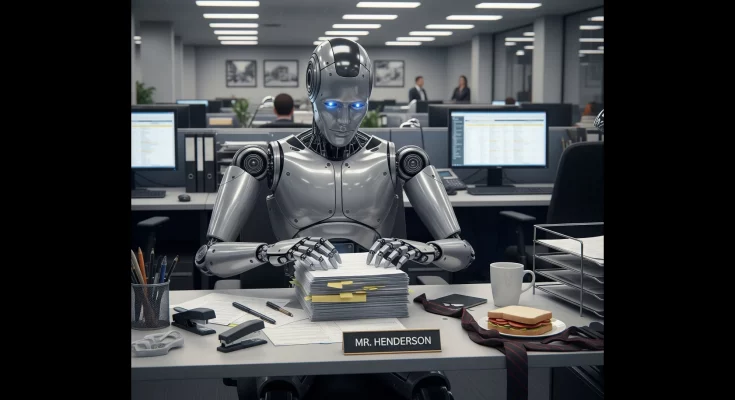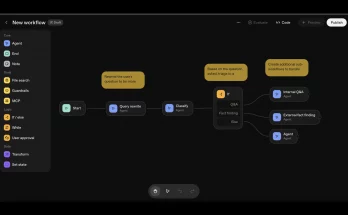What once seemed like science fiction is rapidly transforming into our daily reality. As technology sharpens its edge, entire roles are quietly fading or disappearing altogether. The shift is already here, reshaping how work gets done. Below, we explore the jobs most vulnerable to this change, as automation proves it no longer needs a human presence at the keyboard.
1. Data Entry Clerk
Most data entry jobs have vanished behind sophisticated software. Companies are utilizing machine learning and OCR (optical character recognition) to directly pull information from forms and images into their databases. This shift results in fewer manual keystrokes and reduced errors, causing the traditional data entry career to fade.
2. Payroll Administrator
Payroll processes have gone digital, with AI stepping into the HR breakroom. The demand for human number crunchers is dwindling, as automated systems improve accuracy by up to 20% and let employees access their payslips through self-service portals. Even basic paycheck queries are often managed by chatbots now.
3. Appointment Scheduler
AI scheduling tools analyze vast quantities of data, including appointment lengths and patient histories, creating smarter calendars. Integrated with health records and billing platforms, they reduce the need for human schedulers, resulting in fewer staff, faster bookings, and less room for errors.
4. Information and Records Clerk
Filing cabinets are becoming relics. AI now organizes, stores, and retrieves records faster and more securely than any human could. OCR and automated workflows simplify tasks like document sorting, retention tracking, and compliance audits, reducing the need for clerks.
5. Virtual Receptionist
Your friendly front-desk voice might already be synthetic. Virtual receptionists utilize natural language processing to handle calls, schedule appointments, and answer questions around the clock. This technology can manage enormous call volumes without needing breaks, making it less likely for humans to fill these roles.
6. Transcriptionist
AI can now transcribe interviews into text in seconds. It provides features like variable playback and multi-speaker labeling. While humans still perfect transcripts, the bulk of work is increasingly handled by machines, making traditional transcription jobs less essential.
7. Order Processing Agent
Manual order entry is on the decline. AI systems capture order data, forecast stock needs, and update shipments in real-time. Solutions like ZBrain enable companies to process more orders with fewer staff, reducing the demand for human employees.
8. Claims Processor
What used to take weeks can now be completed in minutes. Algorithms can verify information, detect fraud, and recognize data patterns that humans frequently overlook. This results in quicker processing times with fewer errors, thereby reducing the need for claims processing jobs.
9. Paralegal (Basic Legal Research)
Law firms are shifting dull tasks to AI. These systems can draft documents, sift through legal databases, and summarize case law, completing what used to be arduous tasks within seconds. While top legal minds remain irreplaceable, for basic tasks, AI is often more cost-effective.
10. Telephone Operators
AI can now troubleshoot issues, connect callers, and solve problems without human input. With most customer inquiries now being managed by intelligent systems, roles in telecom requiring human interaction are diminishing.
11. Junior Web Developer
Tools like GitHub Copilot can create entire code blocks from simple instructions. With AI-driven website builders and automated testing, the demand for junior roles in development is decreasing. Although not impacting senior developers significantly at this point, entry-level positions are under strain.
12. Software QA Tester
AI is adept at finding bugs, scanning codebases, and generating test cases without human aid. They’re thorough, fast, and tireless, leading to fewer testers needed for routine quality assurance roles.
13. Basic IT Support Technician
Gone are the days of long holds for password resets. AI self-service portals and predictive support systems now swiftly guide users through basic issues. This proactive technology decreases the need for human IT support.
14. Technical Documentation Writer
AI tools check grammar, suggest terminologies, and analyze readability for technical documents. While human authors continue to shape the messages, AI is responsible for repetitive tasks, reducing team sizes previously necessary for large documentation projects.
15. SEO Specialist
AI tools now excel in keyword research and ranking analysis, minimizing the manual workload for SEO experts focused on data tasks. As these systems effectively manage routine operations, fewer specialists will be needed for strategic and creative roles.
16. Video Editor
AI is revolutionizing editing, now capable of trimming footage, correcting colors, and adding captions largely without human involvement. This reduces manual editing tasks, allowing more automation in video production.
17. Social Media Manager (Basic Tasks)
AI-driven tools handle scheduling, hashtag research, and performance analysis autonomously, shifting the focus of social media managers toward strategic brand storytelling rather than mundane tasks.
18. Voice-over Artist
AI can vocally deliver scripts with emotion and clarity. Many routine voice-over jobs, like phone prompts and standard explainer videos, are now being performed by synthetic voices.
19. UX Tester (Standardized Feedback)
Automated systems are taking charge of survey design, click tracking, and user flow analysis, making traditional user experience testing less reliant on human researchers.
20. Email Marketing Specialist
AI can optimize email campaigns, including list cleanup, content personalization, and sending schedules. This automation is significantly reducing the need for numerous email marketing specialists.
21. Cashier
With the emergence of self-scanning stations and mobile payment apps, traditional cashier positions are diminishing, as customer transactions are increasingly managed independently.
22. Parking Lot Attendants
Automated technologies are likely to replace parking lot attendants, utilizing smart systems and AI cameras to monitor parking space availability and automate many of the tasks currently performed by humans.
23. Retail Inventory Associate
AI-controlled systems are now tracking stock levels in real-time, alerting management to low inventory levels and operation changes, thus minimizing the need for hands-on inventory associates.
24. Fast-Food Order Taker
Voice assistants and touchscreen systems are beginning to automate the ordering process in fast food restaurants, reducing the need for conventional order-taker roles.
25. Call Center Agent
Chatbots and AI systems are now efficiently handling a vast number of customer inquiries, allowing organizations to reduce staff requirements in call centers.
26. Telemarketers
With AI systems able to conduct sales calls, pitch products, address client objections, and schedule follow-ups, traditional telemarketing is at high risk of disappearing.
27. Travel Agent (Basic Bookings)
Intelligent assistants can handle hotel, flight, and rental car bookings, minimizing the need for human travel agents, particularly for basic itinerary planning.
28. Helpdesk Responder
Helpdesks are increasingly equipped with AI responses that handle password resets and troubleshooting, reducing the human workforce required for these tasks.
29. Warranty Claims Specialist
Automated systems are quickly verifying claims and detecting fraud, leading to fewer claims specialists needed for straightforward claims.
30. Switchboard Operators
As AI systems can now automate call routing and managing inbound requests, the need for switchboard operators is significantly decreasing.
31. E-Commerce Chat Agent
AI-driven chat solutions manage order inquiries, returns, and customer chats, performing tasks previously handled by numerous human agents.
32. News Reporter (Templated Reports)
Algorithms can now generate templated articles like game scores and stock updates, decreasing the need for human reporters to cover this routine reporting.
33. Copywriter (Ads and Short-Form Content)
Ad copy and promotional materials can now be produced swiftly via AI, diminishing the need for human copywriters for straightforward assignments.
34. Proofreader
Automated proofreading tools are adept at identifying and correcting errors, thus reducing the demand for traditional proofreading roles.
35. Technical Manual Writer
Technical manuals are increasingly being drafted with AI input, which checks accuracy and formatting, lowering the overall requirement for human writers.
36. Brokerage Clerks
Automated systems take over report generation and initial analysis in brokerage firms, leading to a steady decline in the need for clerical roles.
37. Concierges
Digital assistants are increasingly managing reservations and guest requests, which minimizes the role traditional concierges play in hospitality.
38. Ad Jingle Composer
AI tools can now create catchy music quickly, significantly reducing the demand for human jingle composers.
39. Personal Financial Advisors
Investment advice is now often provided through apps rather than face-to-face meetings, where simple questions are typically answered by algorithms.
40. Models
Digital 3D models can now portray clothing and styles without needing human models, thus threatening conventional modeling jobs in advertising.
This exploration reveals a significant shift in the job market as AI takes over traditional roles. As we advance further into a technologically-driven future, understanding this landscape is crucial for workers and employers alike.



